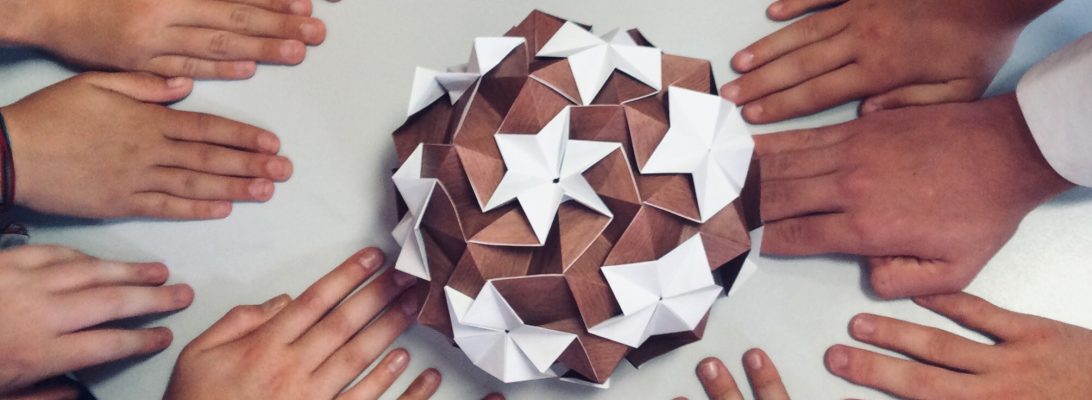One of the interesting things about being associated with “Pinterest” is that their algorithms continually look for stuff it thinks will interest you. Given I only browse Origami, I get some interesting leads. I saw a triangle-based tessellation/corrugation and did a little digging:

Seems Ron Resch, in the early 1970’s, was heavily into paper-based corrugation and this design emerged around then. The basis of this fold is 2 triangle grids, one at twice the scale of the other, offset at 30 degrees to the other. It took me a couple of failed attempts to get the crease layout to work but in retrospect is is much simpler than it seems.

It took me a little while, and some flawed attempts, to find a crease pattern that let the paper fold flat, while leaving nice triangle-twist tiles, and I am now now sure if I like the front or back more – they are both interesting. After folding it, I used little pegs to keep the points sharp and I misted it with water, then let it dry (just to reinforce the paper’s memory of the creases)

I can see large fields of this make a semi-rigid structure that is also maleable – suitable for architectural surfaces I guess. Paper efficiency is interesting, an A3 sheet results in a folded form just less than an A4.
I must explore Resche’s designs some more – clearly a genius that has done a lot of tessellation way before it became popular.

